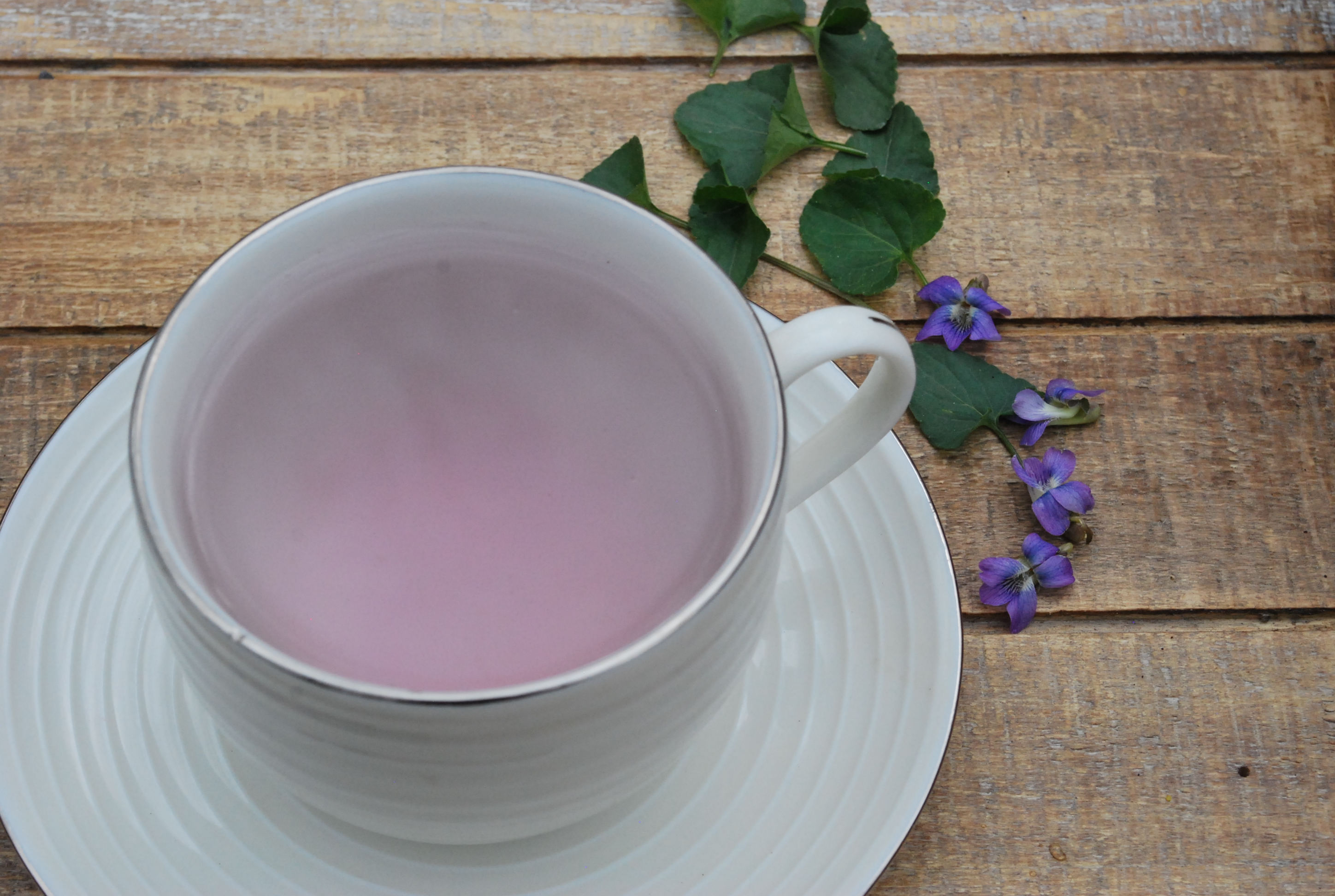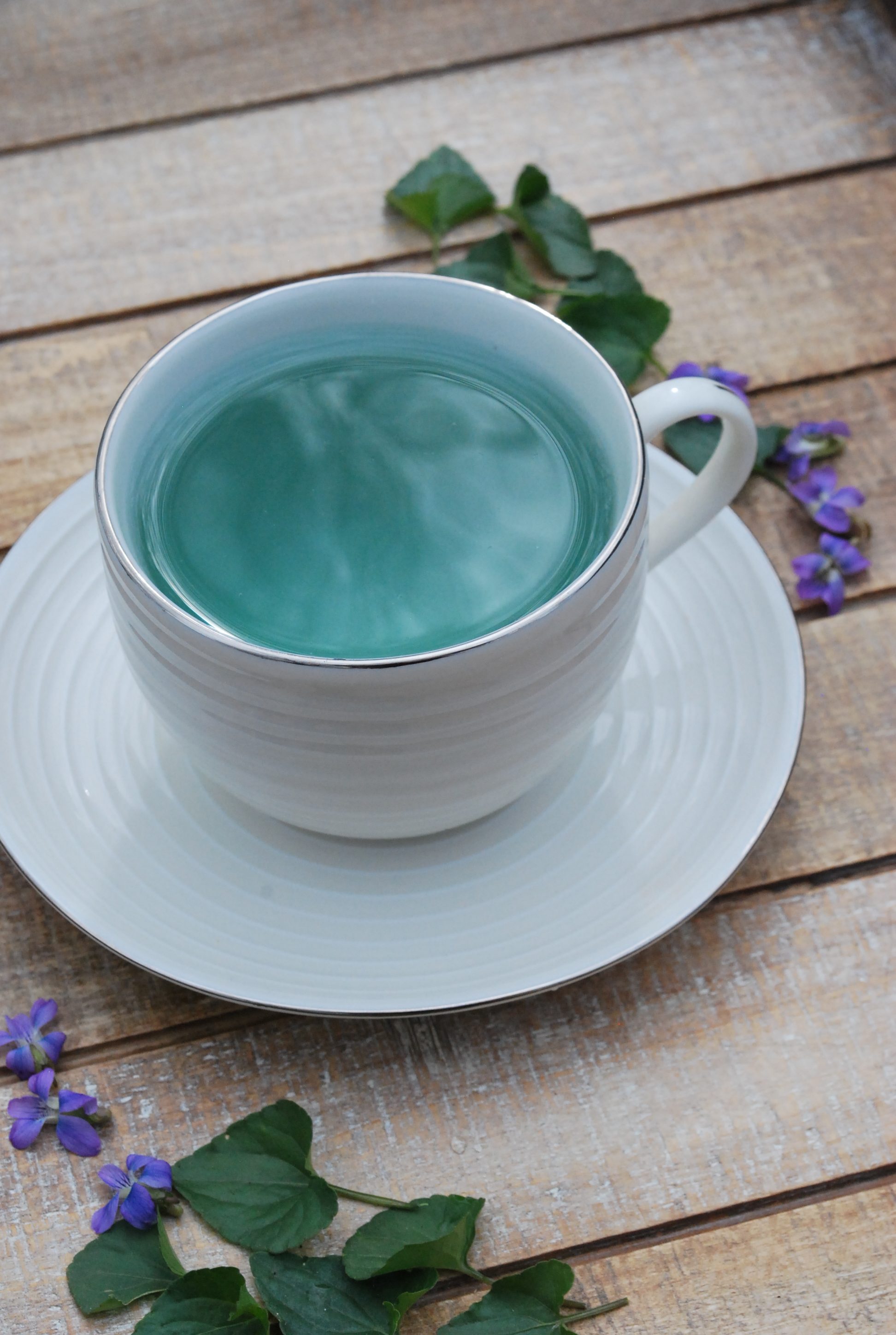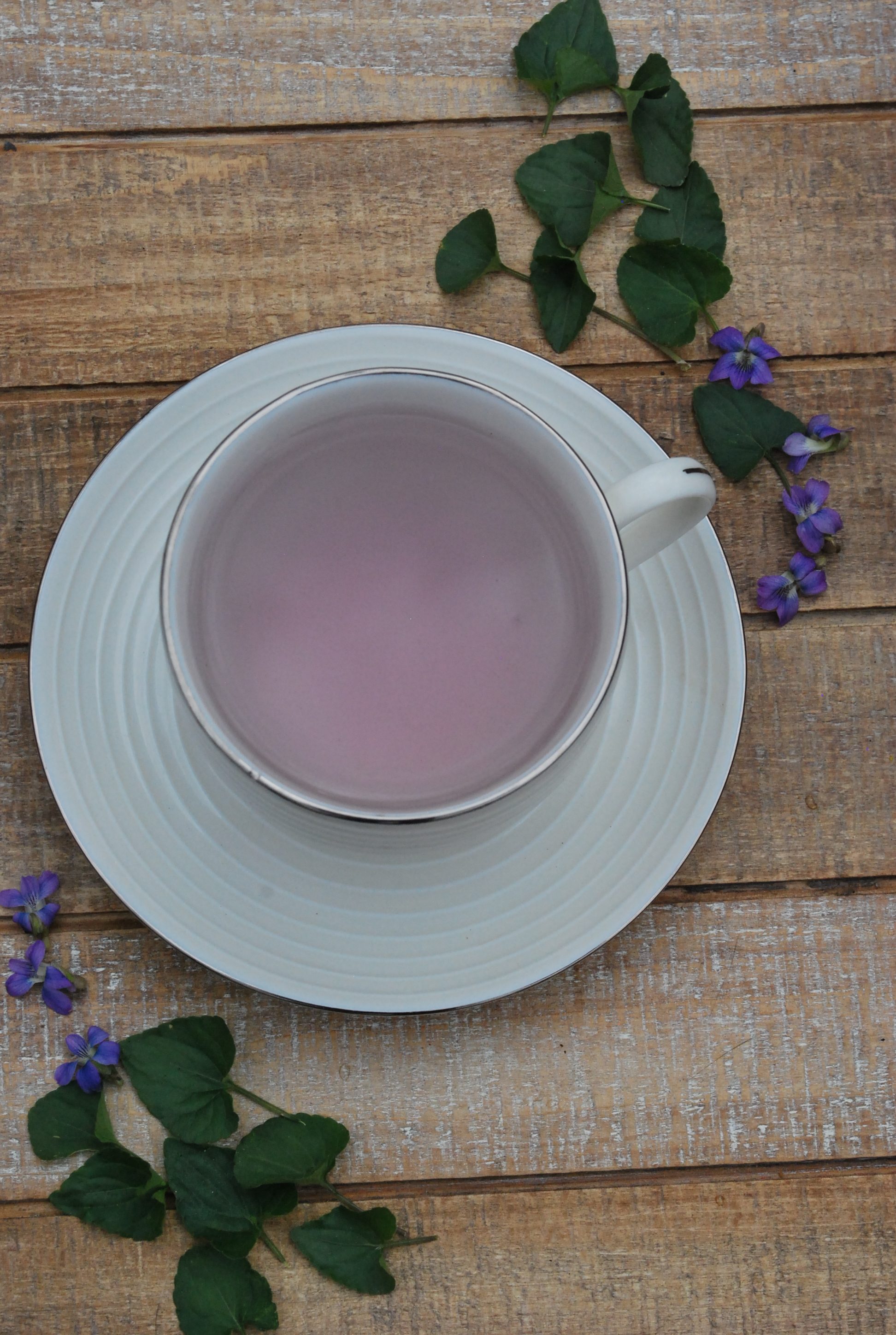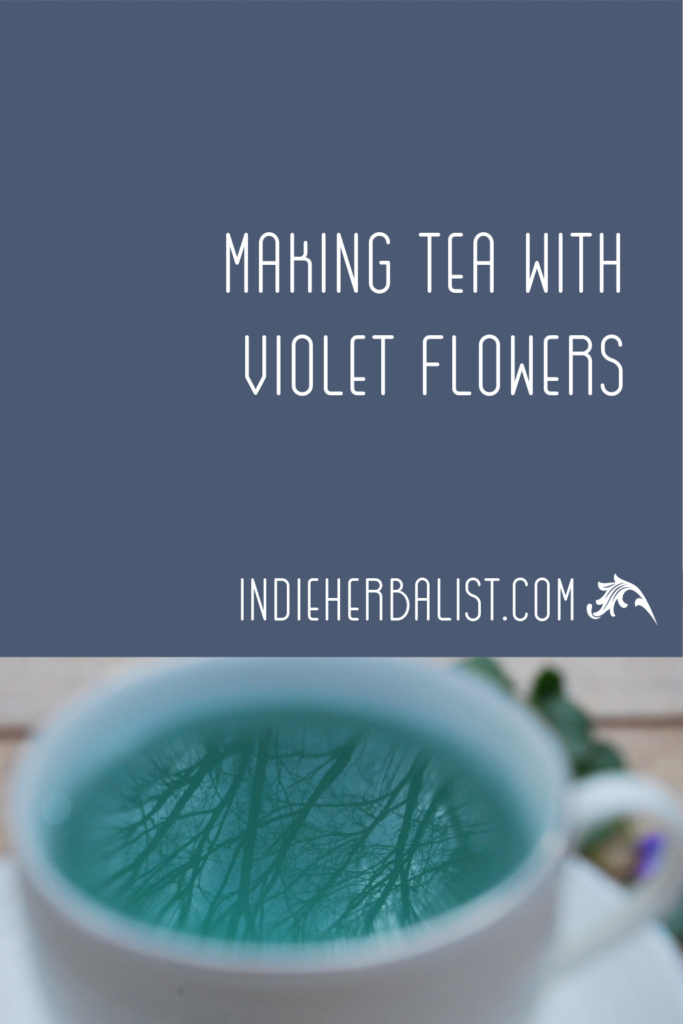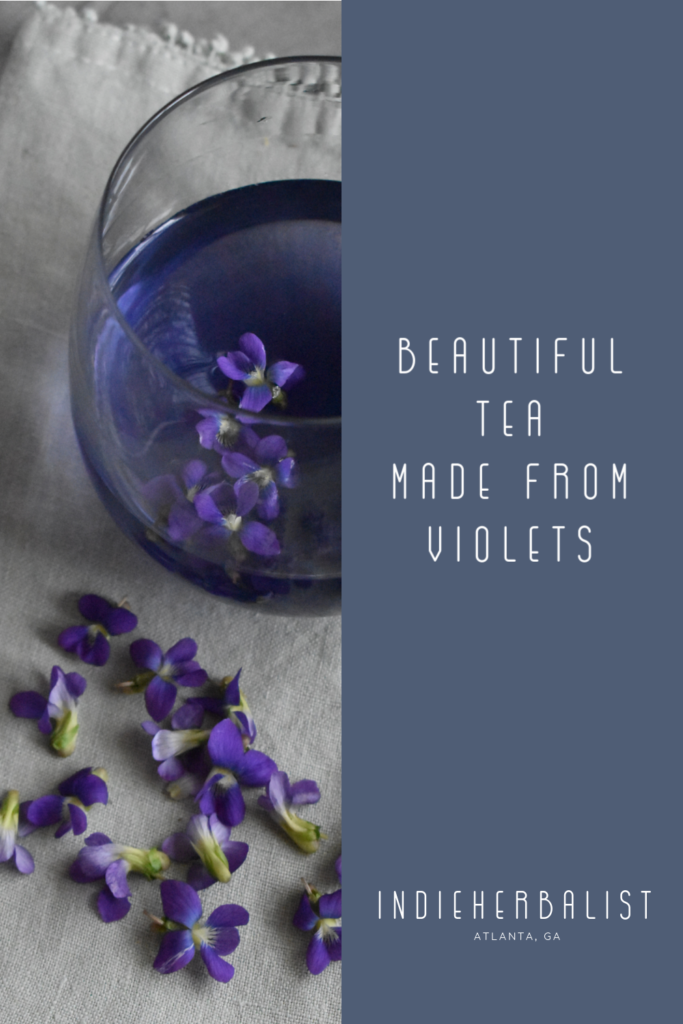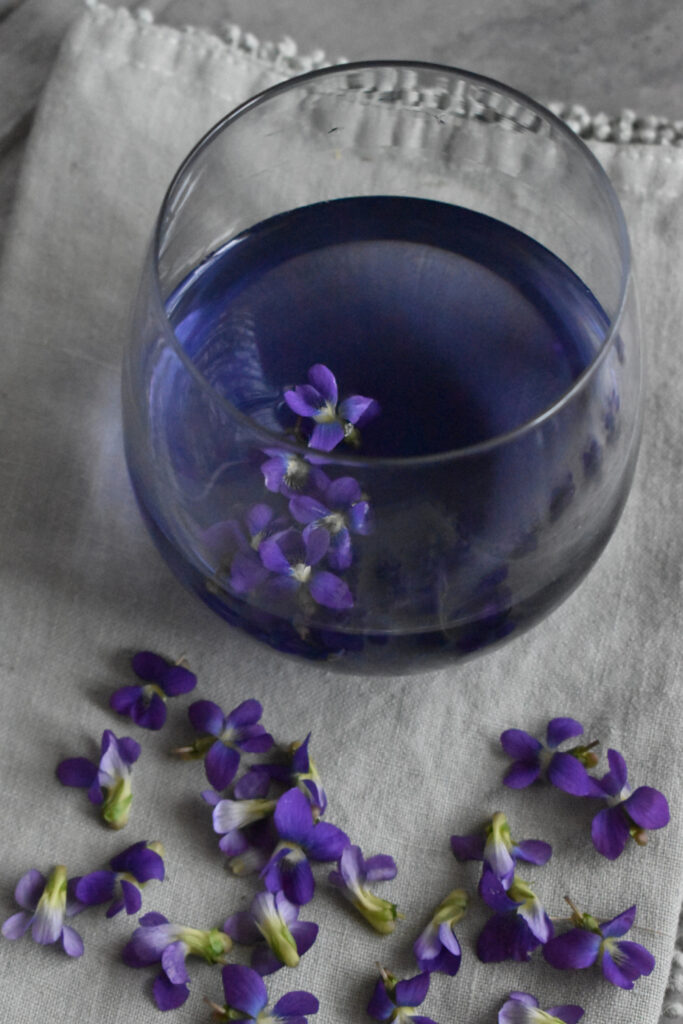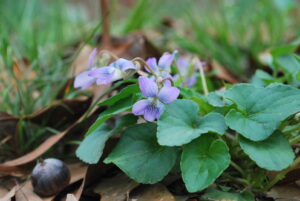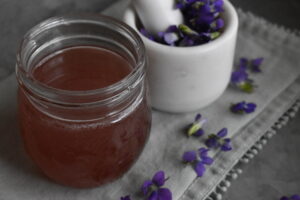Links contained in this post and elsewhere on my website may include affiliate links. When you make a purchase through these links, I earn a commission at no additional cost to you. I only link to products and services that I love - and that I think you will love, too!
Foraged violets are a spring treat for many herbalists. They are one of the first wild greens to appear after winter. Herbalists also love them for their ability to help our bodies shake off winter and get ready for spring. Violets are a gentle, nourishing lymphatic herb that helps us reset after winter health challenges!
The flowers also turn a surprising shade when you make tea with them. The color ranges from deep navy blue to pale turquoise. The flavor is mild, but a little lemon and honey make for an interesting springtime cup.
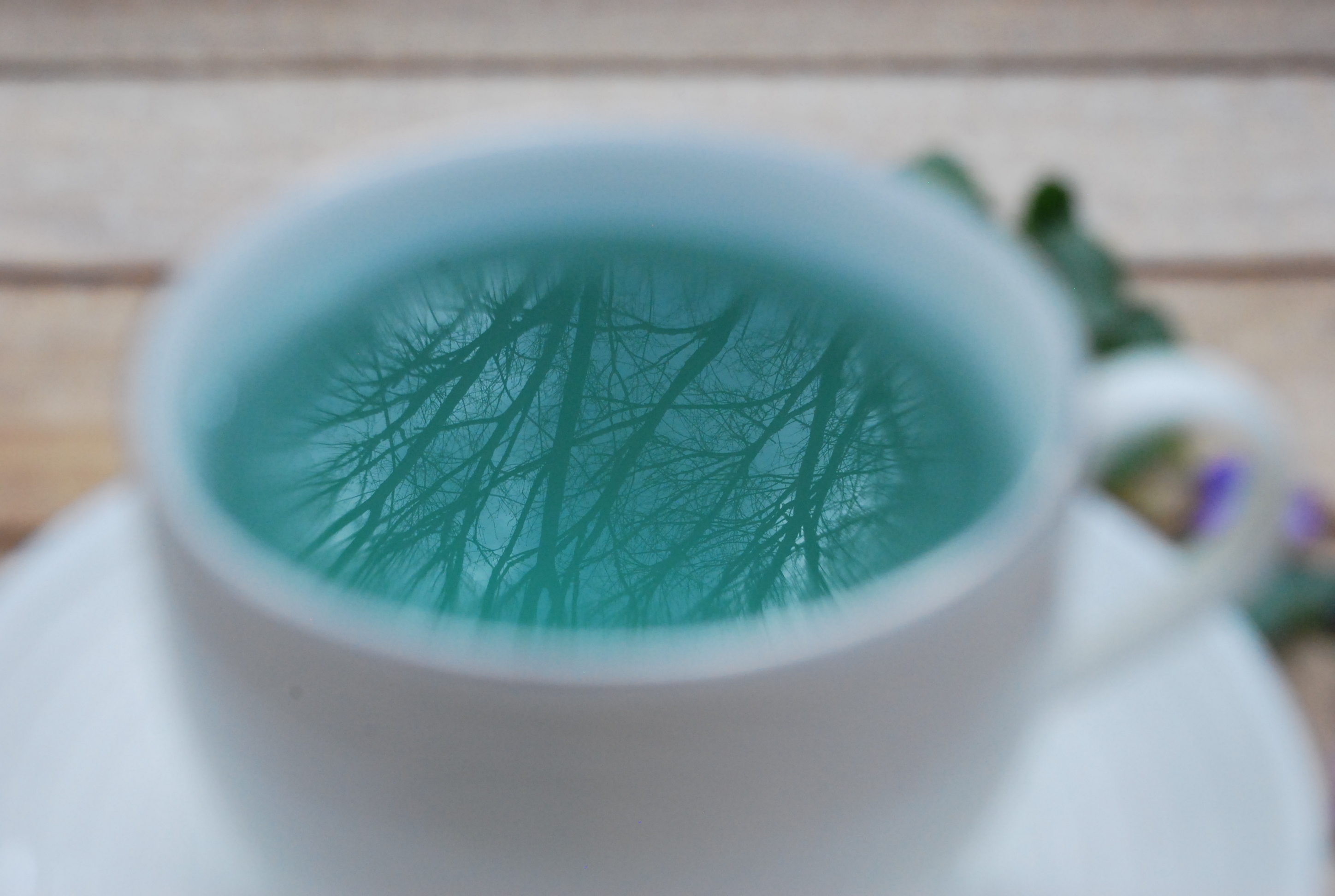
How to use foraged violets
Spring violets are a common garden and lawn pest with a surprising health kick. They are high in vitamin C and other nutrients and mild flavored. This makes them a favorite for spring foraging! Be sure to identify them correctly and only harvest from an area you know has not been sprayed with herbicides. An area free from pets is also a must.
Violets leaves and flowers can be added raw to salads, and the leaves can be steamed or used in recipes like spinach. The purple flowers really shine in jellies, syrups, or as candied petals.
The flowers also make an enchanting blue colored tea. You can make a violet tea with equal parts leaves and flowers, or just the flowers.
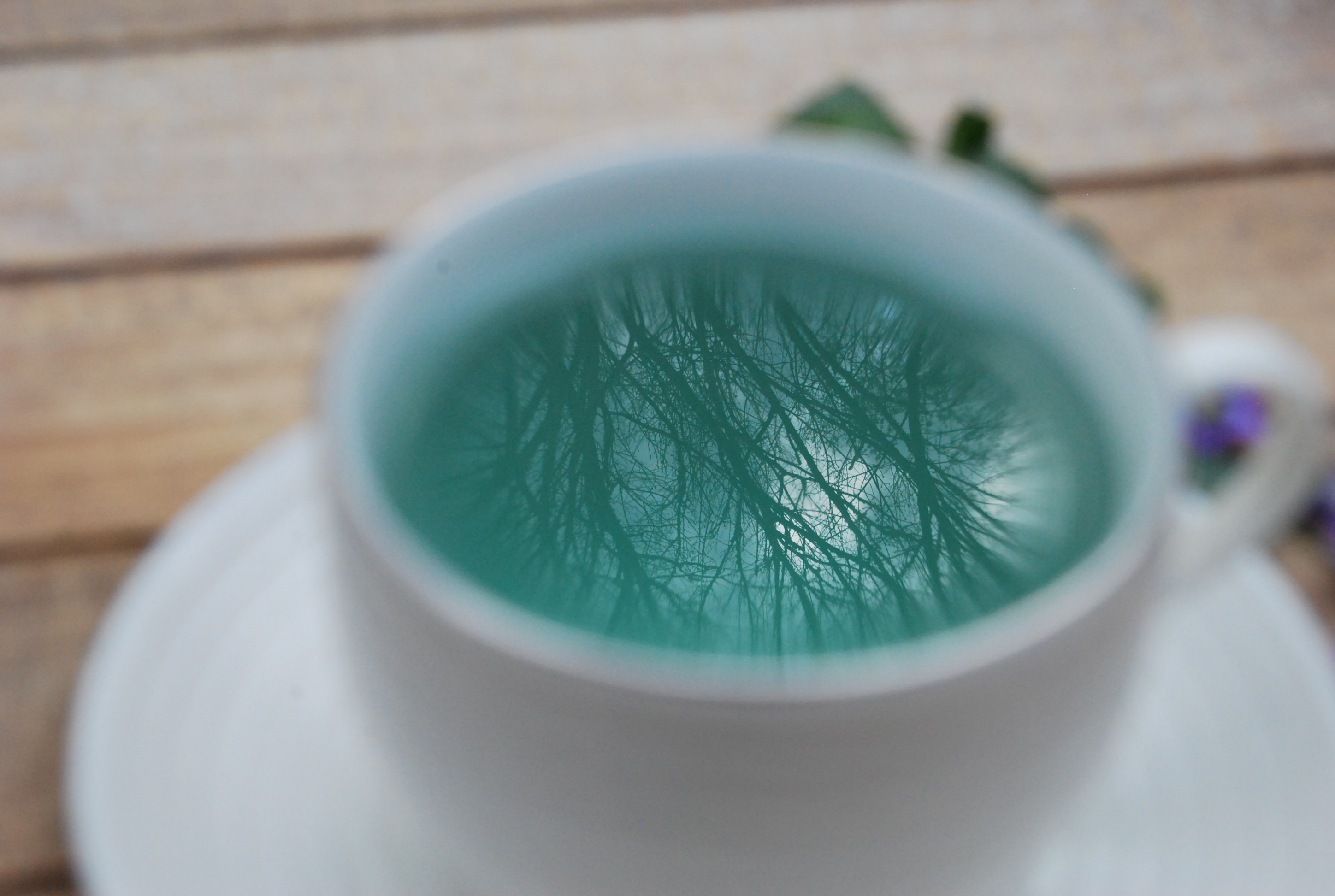
Making tea with violet flowers
The color of your violet tea may vary from what’s pictured here. I’ve had violet tea that’s very bold and blue, and some that’s a much milder shade. Based on my experience, I think there’s a good bit of variation between the species and even some variation within a species. Here’s a very simple way to make tea with foraged violets.
- Pack clean violet flowers and leaves into a quart canning jar until the jar is approximately half full.
- Pour boiling water into the jar until the violets are covered by 1/2 and inch of hot water.
- Allow to steep 20 minutes or overnight. Place in the refrigerator if steeping overnight for best food safety practices.
- Strain the flowers and leaves from the tea and flavor with a little honey, maple syrup, or fruit juice.
The species of violets makes a difference in the finished brew. The color can range from a deep, sapphire blue to a lighter turquoise.
For this version, I used half flowers + half leaves and let it infuse overnight. This was made with common violets, V. soraria.
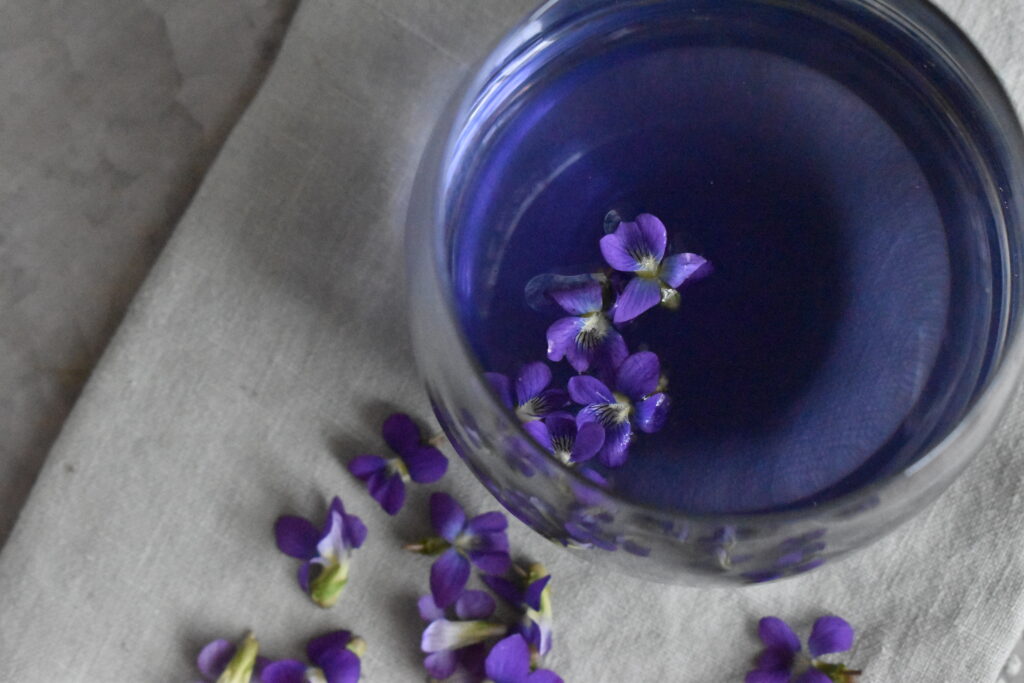
For the turquoise version, I used flowers only and allowed them to steep for twenty minutes. Also V. soraria, but a different location and slight differences in the physical characteristics of the plants.
If you add a splash of lemon juice, your violet tea will turn purple or pink! The lemon juice also adds a little flavor. Without the lemon juice, your violet tea will taste less spectacular than it looks. The flavor is a bit like very mild spinach.
Like spinach, violet leaves are full of vitamins and minerals, so this is a very nutritive tea. Unlike spinach, it is also a gentle lymphatic cleanser. Because of the support it provides for the lymphatic system, violet is perfect to help the immune system come back into balance after winter stresses.
Looking for another way to use foraged violets? Try making a simple violet oxymel with vinegar and honey.
